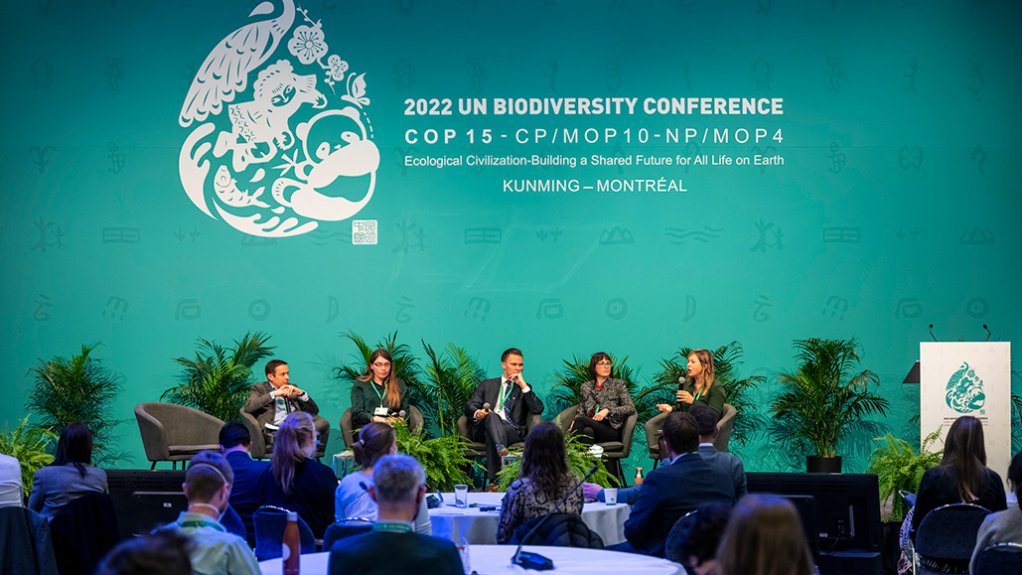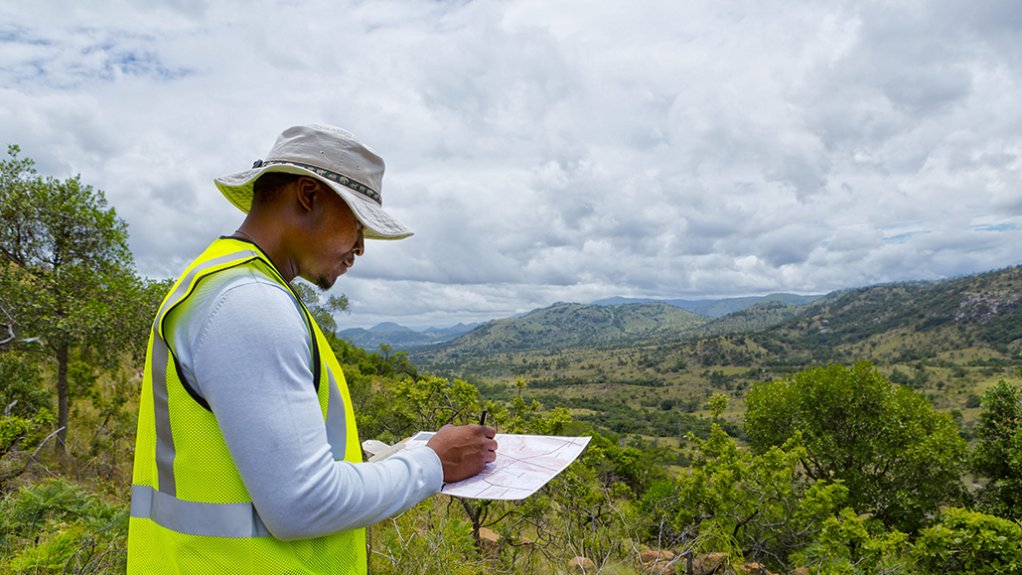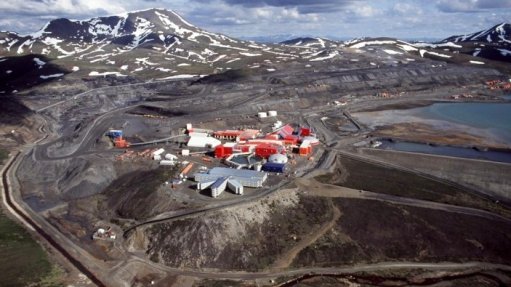ICMM works towards ‘nature-positive’ mining




HAYLEY ZIPP If mining companies followed suit, the scale of the contribution towards the restoration targets of the Global Biodiversity Framework would be substantial
Photo by UN Biodiversity flikr account
COP15 It was abundantly clear that the industry has a unique role to play in supporting a nature positive agenda
Photo by UN Biodiversity flikr account
SAVE IT, DON'T WASTE IT Anglo American has committed to sharing its data in the eBioAtlas – an initiative designed to combat the extinction of life using biological sequencing
Photo by Anglo American
Global organisation International Council on Mining and Metals (ICMM) members have, through its mining principles, committed to pursue continual improvement in environmental performance and to conserve biodiversity.
This translates to applying the mitigation hierarchy – avoidance, minimisation, restoration and offsets – towards a goal of no net-loss of biodiversity, ambitious net-zero climate targets, responsible water management, and safeguarding human and indigenous rights.
With members further pledging to never conduct mining activities in designated World Heritage Sites, ICMM environment director Hayley Zipp adds that the mining industry has become cognisant of the critical role it can play in supporting the ambitions of the Global Biodiversity Framework (GBF).
“When mining companies engaged in discussions at the [fifteenth Conference of the Parties to the United Nations Biodiversity Conference] in December last year, they shared solutions that can contribute towards a world in which nature is more healthy, abundant and resilient – it was abundantly clear that our industry has a unique role to play in supporting a nature-positive agenda.”
She says this contribution ranges from sharing biodiversity data at mine sites to support species conservation, to rehabilitating and restoring degraded land in critical biodiversity hotspots outside mining concessions.
She cites ICMM member and diversified miner Anglo American as having committed to sharing its data in the eBioAtlas – an initiative designed to combat the extinction of life using biological sequencing and analysis technologies to create a global atlas on the state of life in the rivers and wetlands that are globally significant.
Another member, diversified major Vale, has announced a partnership with several organisations to restore, conserve and preservefour-million hectares of land in the Amazon within the next 20 years.
“If a number of mining companies followed suit, the scale of our contribution towards the restoration targets of the GBF would be substantial.”
Mining Influence
Zipp says that, as land and water stewards, and suppliers of minerals, miners have a “massive” opportunity to scale and leverage influence across the landscapes in which they operate and the value chains in which they participate.
For example, the Diamond Route – comprising eight conservation and heritage properties in South Africa and Botswana – owned by leading diamonds producer De Beers, supports connectivity and conservation corridors for the migration of wildlife by connecting land that is currenty unmined, but is nevertheless owned, leased or managed by mining companies.
Through this network, De Beers’ ecology teams protect about 202 343 ha for conservation, making it a safe haven for some of Southern Africa’s most threatened wildlife. The properties are also host to scientific research programmes with international universities, as well as educational outreach programmes with local schools.
Moreover, Zipp says some ICMM members have already set nature-positive targets, noting that diversified resources companies Teck, BHP and others such as aluminium producer Alcoa, and gold miner AngloGold Ashanti, are taking nature-positive actions such as investing in sustainable and innovative strategies to restore, regenerate and rehabilitate the environment.
“Nature has come to the fore, as both the significant risks of widespread ecosystem collapse become evident and the opportunities nature holds for addressing urgent social and environmental challenges [are] better understood. It is a primary focus for ICMM.”
Moreover, ICMM, as an official partner of the Taskforce for Nature-Related Financial Disclosures (TNFD) pilot testing programme for the mining industry, aims to support the testing, iteration and refinement of a nature-related risk management and disclosure framework to ultimately create a shift in global financial flows away from nature-negative outcomes.
“Supporting the TNFD pilot process is a key next step on the journey to creating a global standardised approach for monitoring, measuring and disclosing nature-related performance and dependencies.”
ICMM is also working with experts worldwide to develop a ‘roadmap to nature positive’ for the mining and metals sector, and to accelerate “action on the ground”.
This roadmap would enable members to share and build on insights to date, and will identify new opportunities and innovations from site level and across value chains that can contribute to halting and reversing nature loss and, ultimately, support nature’s recovery, notes Zipp.
Meanwhile, a quarter of the world’s land area is owned, managed or used by indigenous peoples and local communities.
Zipp says indigenous peoples often have profound connections to land and water, which can also be tied to their physical, spiritual, cultural and economic wellbeing.
“Their valuable traditional knowledge and experience in managing the environment in a sustainable manner makes them critical partners in the design and implementation of solutions for halting the loss of nature, and supporting the protection and regeneration of ecosystems.”
She says ICMM members are committed to respecting the rights, culture and natural resource-based livelihoods of indigenous peoples: “The members also recognise the huge value of partnering with indigenous peoples and land-connected peoples in developing solutions to the dual nature-climate crisis the world faces.”
Zipp cites, for example, ICMM member South32’s partnering with the Illawarra Local Aboriginal Land Council and the University of Wollongong to restore and care for areas impacted by residential development, mining and other commercial land uses in Mount Kembla, in New South Wales, Australia.
Nature-positive mining will allow for the transition towards a greener future all around, she concludes.
Article Enquiry
Email Article
Save Article
Feedback
To advertise email advertising@creamermedia.co.za or click here
Press Office
Announcements
What's On
Subscribe to improve your user experience...
Option 1 (equivalent of R125 a month):
Receive a weekly copy of Creamer Media's Engineering News & Mining Weekly magazine
(print copy for those in South Africa and e-magazine for those outside of South Africa)
Receive daily email newsletters
Access to full search results
Access archive of magazine back copies
Access to Projects in Progress
Access to ONE Research Report of your choice in PDF format
Option 2 (equivalent of R375 a month):
All benefits from Option 1
PLUS
Access to Creamer Media's Research Channel Africa for ALL Research Reports, in PDF format, on various industrial and mining sectors
including Electricity; Water; Energy Transition; Hydrogen; Roads, Rail and Ports; Coal; Gold; Platinum; Battery Metals; etc.
Already a subscriber?
Forgotten your password?
Receive weekly copy of Creamer Media's Engineering News & Mining Weekly magazine (print copy for those in South Africa and e-magazine for those outside of South Africa)
➕
Recieve daily email newsletters
➕
Access to full search results
➕
Access archive of magazine back copies
➕
Access to Projects in Progress
➕
Access to ONE Research Report of your choice in PDF format
RESEARCH CHANNEL AFRICA
R4500 (equivalent of R375 a month)
SUBSCRIBEAll benefits from Option 1
➕
Access to Creamer Media's Research Channel Africa for ALL Research Reports on various industrial and mining sectors, in PDF format, including on:
Electricity
➕
Water
➕
Energy Transition
➕
Hydrogen
➕
Roads, Rail and Ports
➕
Coal
➕
Gold
➕
Platinum
➕
Battery Metals
➕
etc.
Receive all benefits from Option 1 or Option 2 delivered to numerous people at your company
➕
Multiple User names and Passwords for simultaneous log-ins
➕
Intranet integration access to all in your organisation





















